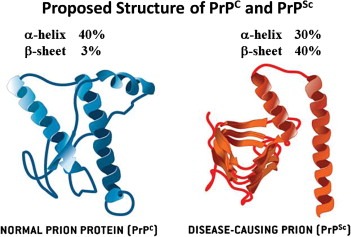Animal and plant viruses, prions, and viroids
- Viruses which lives inside the animal cells are called Animal viruses.
- Animal viruses differs widely in shape, size and nature of the genome.
- Animal viruses contain genome which may be DNA or RNA, single stranded or double, linear or circular, segmented or non – segmented.
- According to the Baltimore system of virus Classifications animal viruses are classified into seven classes.
- This Classification is based on characteristics such as genome type and mRNA synthesis pathway.
Class I (Genome – ds DNA)
- Most common type of animal virus.
- Viral DNA gets entry in the cell nucleus, where cellular enzymes transcribes the DNA results RNA into viral mRNA.
Class I (a)
- DNA replicates in host cell nucleus.
- Uses host enzymes for DNA replication.
- Example- Adenovirus, Papovavirus (papilloma and polyoma), herpes viruses (herpes simplex, varicella zoster and Epstein Barr Virus).
Class I (b)
- DNA replicates in host cell cytoplasm using viral enzymes.
- Example- Pox virus (smallpox, cowpox, and vaccinia).
Class II
- Example- Parvoviruses (contains one molecule of ssDNA.
Class III
- Example – Reovirus
Class IV (Genome – plus sense ssRNA)
- Example- Picornaviruses (poliovirus and Rhinovirus, Togavirus (Rubella Virus).
Class V (Genome- Minus sense ssRNA)
- Example- Rhabdovirus (Rabies), Paramyxovirus (Measles and Mumps) Orthomyxovirus (influenza).
Class VI (Genome- plus sense ssRNA that replicates with DNA intermediate)
- Example– Retrovirus
Class VII (genome- dsDNA that replicates with RNA intermediate)
- Example– Hepadnavirus (Hepatitis B virus).
Effects of animal virus on animal cells
Animal viruses can have several different effect on animal cell:
Lytic infection- Results in in the host cell lysis.
Persistent infection- in this, the infected cell remains alive and continue to produce virus indefinitely.
Latent infection- In this type of infection, there is a slow process between infection through the virus and lytic events. E.g.- cold sores caused by Herpes simplex virus.
Transformation: certain animal viruses can change the normal cell into a tumor cell, a process called transformation.
Life cycle of animal viruses
It consists of the following steps:
- Viral adsorption or attachment to the host cell.
- Viral entry into the host cell.
- Replication of the viral genome within the host cell.
- Viral assembly.
- Viral release.
Retroviruses

- It is a single stranded RNA containing enveloped animal virus that replicate through a DNA intermediate.
- Genomic RNA is 7 to 12 KB long.
- It is linear, single stranded, plus sense and non segmented.
- All retroviral genomic RNA contain gag, pol and env.
- Integrated retroviral DNA remains in the cellular genome as an endogenous Provirus.
- Retroviral mRNA has a conventional structure in which it has capping at 5′ end and polyadenylated at the 3’ end.
Plant Virus
- These viruses exist in a rod and polyhedral.
- Most plant viruses consisting of a ssRNA of plus sense E.g.- Tobacco mosaic virus (rod-Shaped).
- Relatively few plant viruses have DNA genomes.
The two classes of DNA containing plant viruses are:
Class I – dsDNA, in polyhedral capsule, E.g.- Cauliflower Mosaic virus.
Class II – Circular, ssDNA, E.g.- Geminiviruses.
Tobacco Mosaic virus
- It causes leaf mottling and discoloration in tobacco and many other plants.
- It was the first virus to be discovered by Dmitri Iwanowasky and also first virus to be crystallized by Stanley.
- TMV is a rod shaped virus with ~2130 Capsomers arranged in a hollow right handed helix.
- It contains single stranded RNA, plus sense of 6400 nucleotides.
Prions
- Prions are infectious protein.
- Prion proteins are designated as PrP.
- Stanley Prusiner in 1982 coined the term prions which is derived from the words protein and infection.

- PrPC _ Endogenous, normal cellular form.
- PrPSc_ Disease causing, infectious and misfolded form.
- PrPSc– PrPsc is responsible for neurodegenerative disease in animals including human.
- Collectively, prion disease is described as spongiform encephalopathies.
- No prion diseases of plants are known.
- Kuru: It is the first naturally occurring spongiform encephalopathies of humans caused by prions.
- It was first observed by Gajdusek and Zigas in 1957.
Viroid
- It is small infectious agents of plant.
- Genome is circular single stranded RNA (about 250 to 400 nucleotide long).
- It is not associated with any protein.
- Viroid was discovered and named by Otto Diener.
- No viroid disease of animals is known.
- Some viroid include: cadang-cadang viroid, potato spindle tuber viroid (PSTV).
Viroid
- It is single stranded satellite RNAs.
- It requires other helper virus to cause an infection and to replicate.
Reference and Source
- 1% – https://www.ncbi.nlm.nih.gov/pmc/articles/PMC3661469/
- 1% – https://www.britannica.com/science/messenger-RNA
- 1% – http://www.ufrgs.br/imunovet/molecular_immunology/pathoviruses.htm
- 2% – https://quizlet.com/24330804/test-2-study-guide-flash-cards/
- 1% – https://www.ncbi.nlm.nih.gov/pmc/articles/PMC6313515/
- 1% – https://quizlet.com/141517911/chapter-13-flash-cards/
- 1% – http://www.microbiologybook.org/mhunt/dna1.htm
- 1% – https://quizlet.com/270301716/mmi-exam-1-flash-cards/
- 1% – https://en.wikipedia.org/wiki/Tobacco_mosaic_virus
- 1% – https://biologyandmedicineanimation.blogspot.com/2014/12/prion-diseases.html
- 1% – https://www.biologydiscussion.com/essay/diseases/study-notes-on-prions/23848
- 1% – https://www.ncbi.nlm.nih.gov/pmc/articles/PMC2852136/
Also Read:
- Overview of Viroids, Satellites and prions
- Viruses Arise from Genetic Recombination and Mutation
- Vector: properties, types and characteristics
- Classification of viruses on the basis of genome
